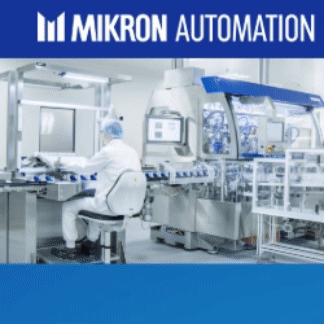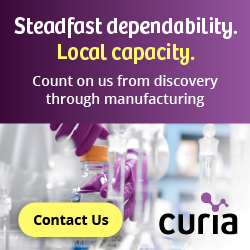Merck Plans Radical Overhaul of R&D Unit
Merck & Co. Inc. is working on a plan to radically reshape its once-storied R&D unit that would create international innovation hubs tapping into drug research outside of its labs. Merck would create these hubs in or near Boston, the San Francisco Bay area, London, and Shanghai, according to people familiar with the matter – regions with a critical mass of academic and commercial R&D. The company would use the bases to scout for promising biotechnology and pharmaceutical research that Merck could license or acquire in deals, according to these people.
Meantime, the company is pruning its own research pipeline. Merck has identified dozens of compounds under study at its labs that it wants to sell off, according to a person familiar with the matter and an internal planning document reviewed by The Wall Street Journal. Among them are experimental glaucoma treatments, some antipsychotics, and a male fertility drug, according to the document.
A Merck spokesman confirmed the company plans to establish a scientific presence in the four regions, to identify both early and late-stage opportunities. “This is consistent with our strategy of actively seeking external scientific innovation to bolster our pipeline with candidates that provide unambiguous promotable advantage,” the spokesman said. He declined to comment on potential divestiture plans.
Together, the moves would represent a significant shift for Merck, making it more receptive to external opportunities and less wedded to in-house handling of the entire life cycle of a drug’s development, from discovery through clinical trials.
The company has long asked its scientists to stay on top of promising science outside its walls, and has had offices in Boston and Palo Alto, CA, to further those efforts. Merck became more active doing deals over the past decade, notably its 2009 acquisition of Schering-Plough and the 2011 purchase of Inspire Pharmaceuticals.
Yet the company’s laboratories have tended to shun the kinds of full partnerships with outsiders that other pharmaceutical companies now count on heavily for drug candidates and technologies. Merck has also lacked a significant R&D presence in London, while its presence in Shanghai has been primarily commercial operations.
Merck’s labs were once the envy of industry, discovering products like the first measles vaccine and the first marketed statin drug to lower cholesterol. Merck researchers prided themselves on carrying drugs from discovery to the last stages of development in-house. But they haven’t scored a major success since diabetes drug Januvia and cervical-cancer vaccine Gardasil were approved in 2006.
R&D setbacks have made it harder for Merck to weather patent expirations for top-selling drugs, such as the allergy and asthma medication Singulair. Now, they have prompted the company to rethink its inward-looking approach to drug R&D. In April, Merck brought in a new R&D Chief, Roger Perlmutter, who has cut and reorganized personnel and narrowed the scope of projects, while shifting resources to more promising opportunities, such as an experimental cancer drug tied to the immune system. In October, Merck said it would cut its workforce by 20% over the next 2 years, including reductions in the R&D unit. Dr. Perlmutter has said the company needs to pursue more external transactions to build up its product line.
The regional hub plan would resemble approaches taken by other leading drug makers. Pfizer Inc. has significantly reduced the size of its longtime R&D center in Groton, CN, in favor of building up a presence in cities, including Boston; Cambridge, UK; and La Jolla, CA. Johnson & Johnson last year unveiled a plan to establish innovation centers in California, Boston, London, and China to focus on identifying early stage R&D. GlaxoSmithKline PLC recently indicated it was opening R&D satellite offices in Boston and San Diego to help manage external collaborations and look for new ones.
“The advantage of having these innovation centers is they capture the academic research at a very early stage,” said Kenneth Kaitin, Director of the Tufts Center for the Study of Drug Development in Boston. As companies like Pfizer and J&J set up innovation hubs in these research hotbeds, their competitors would stand the risk of being left out if they didn’t make similar moves, he said.
Dr. Perlmutter has discussed Merck’s potential plan for regional innovation hubs in internal meetings with employees, as has Rupert Vessey, who leads early stage drug discovery at Merck, according to people familiar with the matter. Merck posted at least two job openings to lead business development and licensing at innovation hubs in Boston and San Francisco, according to internal and external online job postings. The jobs are responsible for identifying early stage research opportunities in their respective regions, and negotiating deals, according to the postings. The Boston job has been filled, according to a Merck posting.
Dr. Perlmutter has also shuffled management at Merck labs. He has hired people he worked with at biotech Amgen Inc., and begun setting up an infrastructure to restock the company’s pipeline by doing deals to bring in promising drugs discovered elsewhere. Dr. Perlmutter has singled out so-called immunotherapies for treating cancer, as well as vaccines, as priorities. Yet, he has also said he wants to be less dogmatic about focusing on specific therapeutic areas in the first place, and to be more opportunistic about pursuing the best science, whatever disease it involves. Such an approach requires the means to identify promising areas and seal deals tapping into them.
To facilitate this deal-making, Merck said in August it had hired Iain Dukes as Senior Vice President of Licensing and External Science. He was previously Vice President of External R&D at Amgen.
Also, Merck has named Roy Baynes as Head of Global Clinical Development to replace Barry Gertz, who is retiring. Dr. Baynes had led oncology, inflammation, and respiratory therapeutics at Gilead Sciences Inc. since January 2012, and before that, held a leadership post at Amgen during Dr. Perlmutter’s tenure there.
Total Page Views: 1875














